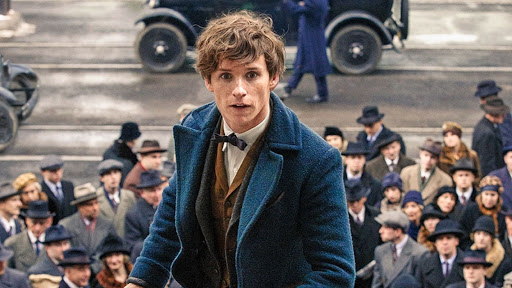
The
makers of Star Wars, Episode VII: The Force Awakens had a difficult task
to achieve: they had to revive a beloved franchise that had been tainted by a
lackluster second trilogy, returning the story to the well-respected roots of
the initial trilogy from the 1970s and 80s and creating a transition to a new narrative
with different characters. Attempts to create such a bridge could easily offend
the fanboys, who love the first three films with an intensity that borders on
the pathological, so if this seventh installment treads some familiar territory
on its way to introducing the characters who will likely dominate the new
series of films, that merely allows viewers an easy opportunity to tap into the
mythology originally created by George Lucas four decades ago. Han Solo
(Harrison Ford) and Leia Organa (Carrie Fisher) are here to create a sense of
nostalgia as they search for Mark Hamill’s Luke Skywalker, who has disappeared
but could provide valuable assistance in combatting the First Order, the
villainous replacement for the Evil Empire of the earlier movies. Even the Millennium
Falcon, Han’s famous spaceship, and his co-pilot, Chewbacca, appear, as do C3PO
and R2-D2 in smaller roles. However, we need to establish a new set of heroes,
so the hotshot pilot this time is Poe Dameron (played by Oscar Isaac), and he
is joined in the Rebel battles by Finn (John Boyega), a disenchanted
Stormtrooper mourning the death of his friend and undergoing an existential
crisis, and Rey (Daisy Ridley), a junk scavenger who finds a message in a
droid, the adorable BB-8. You’ll notice the parallel between the storyline here
and that of the first film, Star Wars, Episode IV: A New Hope,
when you realize that BB-8 carries information on a new weapon developed by the
First Order. Unsurprisingly, the new weapon is very much like the Death Star of
the earlier film, only much larger. There’s even a moment when the two are
compared to each other to show that the new one is a bigger, better weapon. In
order to figure out how to blow up the weapon, the information in BB-8 needs to
get into the hands of the Rebel leaders, and the complications that delay that from
happening make up the bulk of the narrative this time. I rewatched the original
trilogy with The Boyfriend before going to see Star Wars, Episode VII: The Force
Awakens in theaters. He had never seen the original films and was only
familiar with the second, lesser trilogy, but he found the new “episode” to be
a thrilling addition to the canon. I did as well, particularly because this
film creates a diverse universe of characters such as Poe and Finn, played by a
Latino actor and a black actor, respectively, and it makes Rey, the lead female
character, a strong, central part of the story. It was also lovely to see Ford
and Fisher back in their iconic roles, and their inclusion allows for the
introduction of their son, Kylo Ren (Adam Driver), who wants to be the new
Darth Vader, making the theme of determining the significance of one’s genetic
heritage a central part of the story here, just as in the original trilogy. While
you might think that these links between the earlier films and this sequel
would make for a boring experience at the movies, what happens instead is a
combination of admiration for the ability of the filmmakers to interweave what
lovers of the Star Wars films have always expected with a new, exciting cast of
characters who will keep our interest and attention as they become more of a
focus in later films.
Oscar Nominations: Best Achievement in
Film Editing, Best Original Score, Best Achievement in Sound Editing, Best Achievement
in Sound Mixing, and Best Achievement in Visual Effects
























